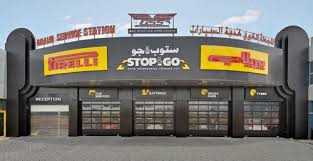Introduction
In urban environments, stop and go traffic is a prevalent issue that can significantly impact drivers’ experiences. This term describes the situation where vehicles frequently start and stop, creating a jerky driving pattern. The phenomenon is often encountered in congested areas or during peak traffic hours. In this article, we will explore the underlying causes of stop and go traffic, its effects on drivers and the environment, and potential solutions to manage it more effectively. Insights from PitstopArabia, a leading automotive solutions provider, will also be highlighted to offer practical advice for dealing with stop and go conditions.
What is Stop and Go Traffic?
Stop and go traffic occurs when drivers frequently experience interruptions in their driving flow, having to accelerate and brake repeatedly. This type of traffic congestion is different from smooth, continuous flow and is characterized by its disruptive nature. Several factors contribute to stop and go conditions, and understanding them can help in finding ways to mitigate their impact.
Key Factors Contributing to Stop and Go Traffic
- Traffic Volume
- High vehicle density on the roads often leads to congestion. When too many vehicles attempt to use the same road space, it results in frequent stops and starts.
- Traffic Signals
- Intersections with multiple traffic signals can disrupt the flow of traffic. Vehicles are forced to stop at red lights and then accelerate when the light turns green, causing a stop and go pattern.
- Road Design
- Poorly designed roads, such as those with sharp turns, inadequate lane markings, or frequent intersections, can contribute to stop and go traffic by creating obstacles that disrupt smooth driving.
- Accidents and Roadworks
- Unexpected events such as accidents or road construction can create bottlenecks, forcing drivers to stop and go as they navigate around the disruption.
- Driver Behavior
- Aggressive driving behaviors, such as sudden lane changes and tailgating, can exacerbate stop and go traffic by causing unnecessary disruptions in the flow of traffic.
Effects of Stop and Go Traffic
Stop and go traffic can have several negative impacts, both on drivers and the environment. Understanding these effects can help in appreciating the importance of addressing the issue.
1. Increased Fuel Consumption
Frequent acceleration and braking consume more fuel compared to maintaining a steady speed. This inefficiency not only raises fuel costs but also leads to higher emissions.
2. Vehicle Wear and Tear
The constant need to brake and accelerate in stop and go traffic accelerates the wear on critical vehicle components such as brakes, tires, and transmission systems. This can result in higher maintenance costs and a reduced vehicle lifespan.
3. Driver Fatigue
Navigating through stop and go traffic can be mentally and physically exhausting. The constant need to adjust speed and maneuver through congested conditions can lead to driver fatigue, which increases the risk of accidents and reduces overall driving safety.
4. Environmental Impact
Increased fuel consumption leads to higher emissions of greenhouse gases and pollutants. This contributes to air pollution and has a detrimental effect on the environment, including exacerbating climate change.
Solutions to Mitigate Stop and Go Traffic
Several strategies can be employed to alleviate the negative effects of stop and go traffic. These solutions aim to improve traffic flow, reduce congestion, and minimize the impact on drivers and the environment.
1. Improving Traffic Flow
Optimizing traffic signal timings and implementing intelligent traffic management systems can help smooth the flow of traffic. Efficient road design and better traffic management practices can also contribute to reducing stop and go conditions.
2. Promoting Public Transportation
Encouraging the use of public transportation can help reduce the number of vehicles on the road. This, in turn, can decrease congestion and minimize stop and go traffic.
3. Adopting Fuel-Efficient Vehicles
Driving fuel-efficient vehicles, such as hybrids or electric cars, can help reduce the fuel consumption and emissions associated with stop and go traffic. These vehicles are designed to be more efficient and have a lower environmental impact.
4. Utilizing Traffic Apps
Navigation apps that provide real-time traffic updates can help drivers avoid congested routes and find alternative paths. These apps can assist in reducing the frequency of stop and go conditions by guiding drivers away from traffic hotspots.
5. Implementing Roadworks Smartly
Careful planning and execution of roadworks can minimize disruptions and reduce the likelihood of creating stop and go traffic conditions. Proper scheduling and communication with drivers can help manage roadwork impacts more effectively.
How PitstopArabia Can Help
PitstopArabia, a prominent provider of automotive solutions, offers various services designed to help drivers manage the effects of stop and go traffic. By maintaining your vehicle in optimal condition, PitstopArabia can assist in reducing the wear and tear associated with frequent braking and acceleration. Their expertise extends to providing recommendations for improving fuel efficiency and overall vehicle performance.
Services Offered by PitstopArabia
- Vehicle Maintenance and Repair: Regular maintenance checks to ensure that your vehicle is running smoothly and efficiently, which can help mitigate the effects of stop and go traffic.
- Fuel Efficiency Tips: Expert advice on how to enhance your vehicle’s fuel efficiency, reducing the impact of stop and go traffic on fuel consumption.
- Traffic Solutions: Information and recommendations on how to navigate through congested areas effectively, reducing the likelihood of stop and go conditions.
Conclusion
Stop and go traffic is a common issue in urban driving environments that can have significant effects on fuel consumption, vehicle wear and tear, driver fatigue, and environmental impact. By understanding the causes and implementing effective solutions, drivers can alleviate some of the challenges associated with stop and go conditions. Leveraging the services and insights provided by PitstopArabia can further assist in managing these challenges and improving your driving experience.
FAQs
What causes stop and go traffic?
Stop and go traffic can be caused by various factors including high vehicle volume, traffic signals, poor road design, accidents, and driver behavior.
How can stop and go traffic affect my vehicle?
Frequent stopping and starting can increase fuel consumption, cause accelerated wear on vehicle components, and lead to higher maintenance costs.
What can I do to reduce the impact of stop and go traffic?
Improving traffic flow, promoting public transportation, adopting fuel-efficient vehicles, using traffic apps, and implementing roadworks smartly can help reduce the impact of stop and go traffic.
How can PitstopArabia help with stop and go traffic issues?
PitstopArabia offers vehicle maintenance and repair services, fuel efficiency tips, and traffic solutions to help manage the effects of stop and go traffic.
For more information on how PitstopArabia can assist you, visit their website or contact their customer service.
By understanding and addressing stop and go traffic, drivers can improve their overall driving experience and contribute to a more efficient and environmentally friendly transportation system.
Stay tuned for more news and updates on Infinite Insight Hub!



